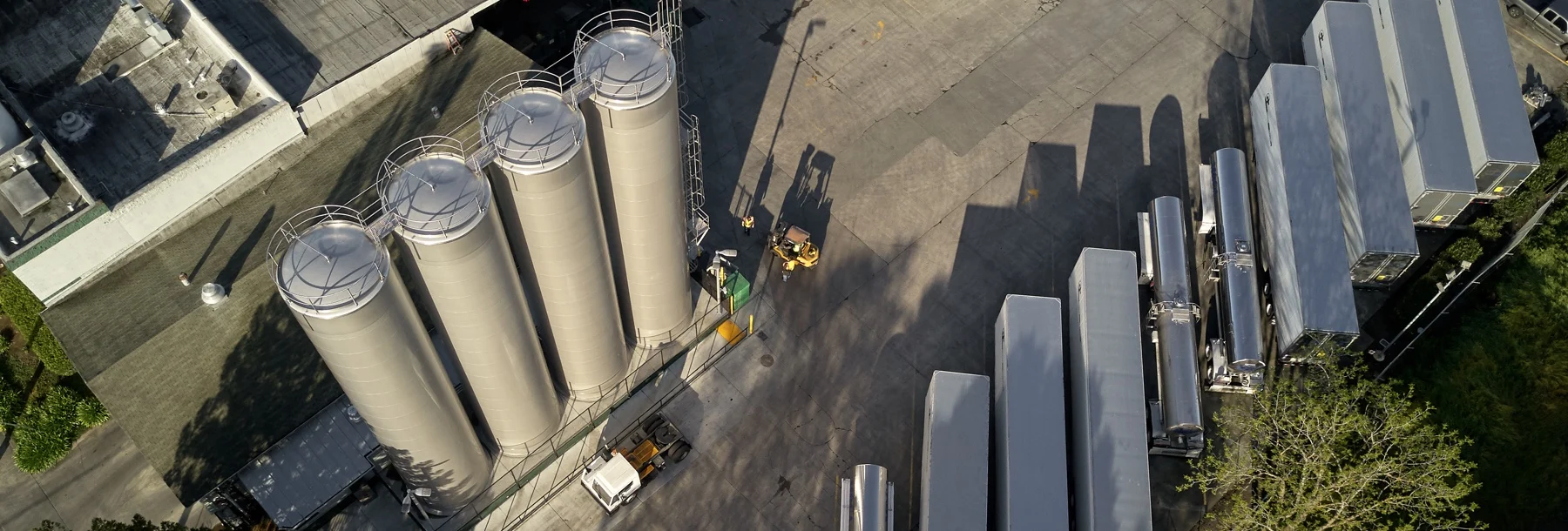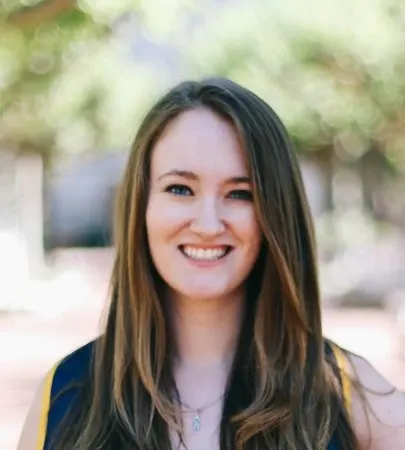Safety
The challenge of drowsiness detection: How Samsara sets the standard
November 11, 2024
VP of AI and Data

Drowsiness is one of the leading causes of accidents—and when it happens, those accidents are often severe. In fact, drivers who sleep less than four hours at night are 11.5x more likely to crash than those who get a full night’s sleep, and 17% of all fatal crashes involve a drowsy driver. Commercial drivers are particularly at risk, since they often work long hours and drive lengthy routes.
Drowsiness identification and prevention is a top priority for commercial fleet safety leaders. Thankfully, recent advancements in artificial intelligence (AI) and machine learning (ML) have made it possible to detect drowsiness and alert drivers in real time—a scientific feat with the potential to massively improve public safety. As a result, many technology providers in the video-based safety market have recently announced drowsiness detection features. But not all detection models are created equal.
When it comes to something as serious as drowsy driving, it’s important that you can trust the technology behind the scenes. Read on to learn why drowsiness is so difficult to detect accurately, why no single behavior (such as yawning or prolonged eye closure) is a sufficient indicator of drowsiness by itself, and what sets Samsara’s Drowsiness Detection model apart from the rest.
Why is drowsiness so difficult to detect accurately?
While advancements in AI and ML have made it possible to identify drowsy driving, it remains an incredibly nuanced concept to train AI models to detect. This is due to a couple of reasons:
Drowsiness is not a single, isolated behavior: Unlike other safety risks detected by AI (such as mobile phone usage or speeding), drowsiness is not a single, objective behavior. Individual behaviors—such as head nodding, slouching, prolonged eye closure, yawning, rubbing eyes, and more—are potential indicators of fatigue, but no single behavior is a sufficient detector of drowsiness. In fact, an analysis* among early adopters of Samsara’s Drowsiness Detection found that approximately 70% of drowsy driving events were detected by multiple behaviors. Drowsiness detection requires a model that considers multiple behaviors over time to assess true drowsiness risk, not simply one behavior over a short time interval.
Scientific recommendations are evolving to include more behavioral indicators of drowsiness: In 1994, the National Highway Traffic Safety Administration (NHTSA) introduced PERCLOS, an algorithm that relied on a single metric to detect drowsiness: the percentage of time a driver’s eyes are closed. Since then, researchers have found that PERCLOS alone is often not sufficient to detect all the ways drowsiness shows up on the road, and modern detection should consider behaviors beyond PERCLOS–including facial expressions, eye blinks, head poses, and yawns. In 2019, the European Union went a step further with its General Safety Regulation II (GSR II), which mandates fatigue detection systems in vehicles and recommends the Karolinska Sleepiness Scale (KSS) as a standard scale to determine drowsiness “severity.” In 2020, the NHTSA published research concluding that AI and ML show promise in drowsiness detection because of their ability to consider multiple behaviors.
Yawning alone is not enough. Neither is prolonged eye closure.
Some technology providers rely solely on a single behavior—such as yawning or prolonged eye closure—as a proxy for drowsiness. This is inherently flawed.
Yawning is not always an indicator of fatigue, and it is rarely a reliable indicator of the riskiest fatigue. People can yawn for other reasons, such as boredom. Even when yawning does indicate fatigue, it can serve as a reflex that signals the driver to be more alert. Detection models that rely solely on yawning may capture too many false positives and—more importantly—miss instances of fatigue that are actually a risk. We’ve found this to be true; an analysis* among early adopters of Samsara’s Drowsiness Detection found that approximately 77% of drowsy driving events were detected by behaviors other than yawning alone.
Similarly, prolonged eye closure is not a sufficient indicator of drowsiness on its own. Models that rely solely on prolonged eye closure are based on outdated guidance from 30 years ago. Since the NHTSA’s PERCLOS recommendation in 1994, scientists have continued to research fatigue indicators and have concluded that drowsiness detection should assess not just one but multiple behaviors over time. More importantly, prolonged eye closure is an indicator of late-stage fatigue; only a person who is nearly asleep will meet the criteria for it. By this time, it may be too late for him or her to course-correct. Effective drowsiness detection identifies both early-stage and late-stage fatigue, and alerts the driver and supervisors in real time so they can take corrective action before it’s too late.
Samsara’s model assesses 17+ behaviors and is trained on the world's largest connected operations data set.**
Anyone can say their technology is “industry-leading”—but few can back it up. Here’s what sets Samsara’s Drowsiness Detection model apart from the rest:
Trained on trillions of data points: An AI model is only as good as the data that trains it. Because drowsiness is so nuanced, a good model needs to “learn” from a lot of examples of what fatigue looks like, and how it might show up in different circumstances. That's why the scale of Samsara’s data set is important; we train our AI-based detections, including Drowsiness Detection, on more than 180 billion minutes of video footage and data from 220 billion miles traveled. Because we can pull hundreds of thousands of real examples from our data, we can train an end-to-end deep learning model that has a holistic, contextual understanding of all of the behaviors that constitute drowsiness. Technology providers that use a single behavior, like prolonged eye closure or yawning, to detect drowsiness often rely solely on older techniques like scanning facial landmarks, which are less robust.
Multi-behavior detection: Samsara’s detection model analyzes 17+ driver behaviors that indicate fatigue, including head nodding, slouching, prolonged idling, face-rubbing, yawning, and prolonged eye closure. Through iterative training on the scale of Samsara data, the model learns what fatigue looks like beyond these 17 behaviors; it builds a contextual and holistic understanding of all the ways drowsiness might show up in the cab. Built to reflect the latest academic research on drowsiness and industry-standard frameworks like the Karolinska Sleepiness Scale, it produces a fatigue score and only alerts if that score passes a certain threshold. This makes it possible for our AI model to better learn behaviors that indicate drowsiness risk, for both early-stage and late-stage fatigue. As a result, we avoid inundating drivers with too many false positives. For example, Samsara won’t alert just because of one single instance of a yawn.
Leverages the most modern science: Our model aligns with the most modern fatigue detection research across both the United States and European Union. It also leverages the most modern ML techniques, rather than relying on older techniques like facial landmarking. In addition, we have an in-house team of PhD experts in ML who continuously fine-tune the model.

Detect, act on, and help prevent drowsy driving with Samsara.
When it comes to preventing drowsy driving, you need a technology partner you can trust. Samsara takes a thorough approach to product development. We understand the nuances of driver safety, and we believe AI can be used responsibly to help safety leaders reduce risk while building trust with drivers on the road.
Detection isn't the only value in a comprehensive, holistic drowsiness solution. With Samsara, both drivers and supervisors get real-time alerts so they can take corrective action in the moments that matter. Furthermore, because our Drowsiness Detection feature (along with all of our AI-powered safety features) is fully integrated within the Samsara platform, you can use Samsara to identify trends and patterns of fatigue across your organization. This means Samsara isn’t just for detection—it can assist with end-to-end drowsiness prevention, before the driver gets behind the wheel and when that driver is on the road.
Learn more about how Samsara’s comprehensive Drowsiness Detection can help you accurately detect, act on, and prevent drowsy driving.
Learn more
*Aggregated analysis of over 35,000 detections across a cohort of 50 customers since July, 2024.
**Internal analysis based on review of internal data, third-party reports, and externally reported statistics.


















